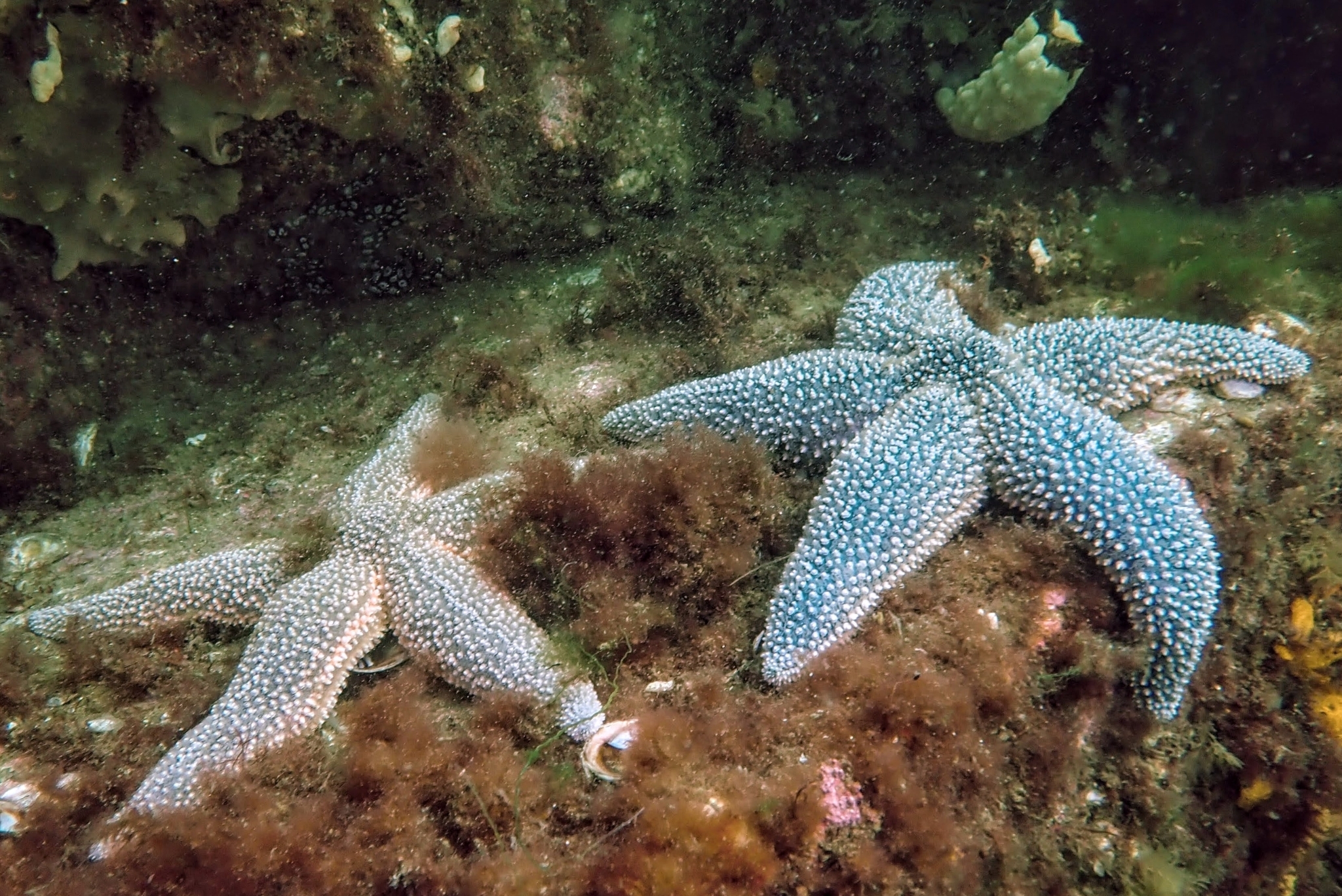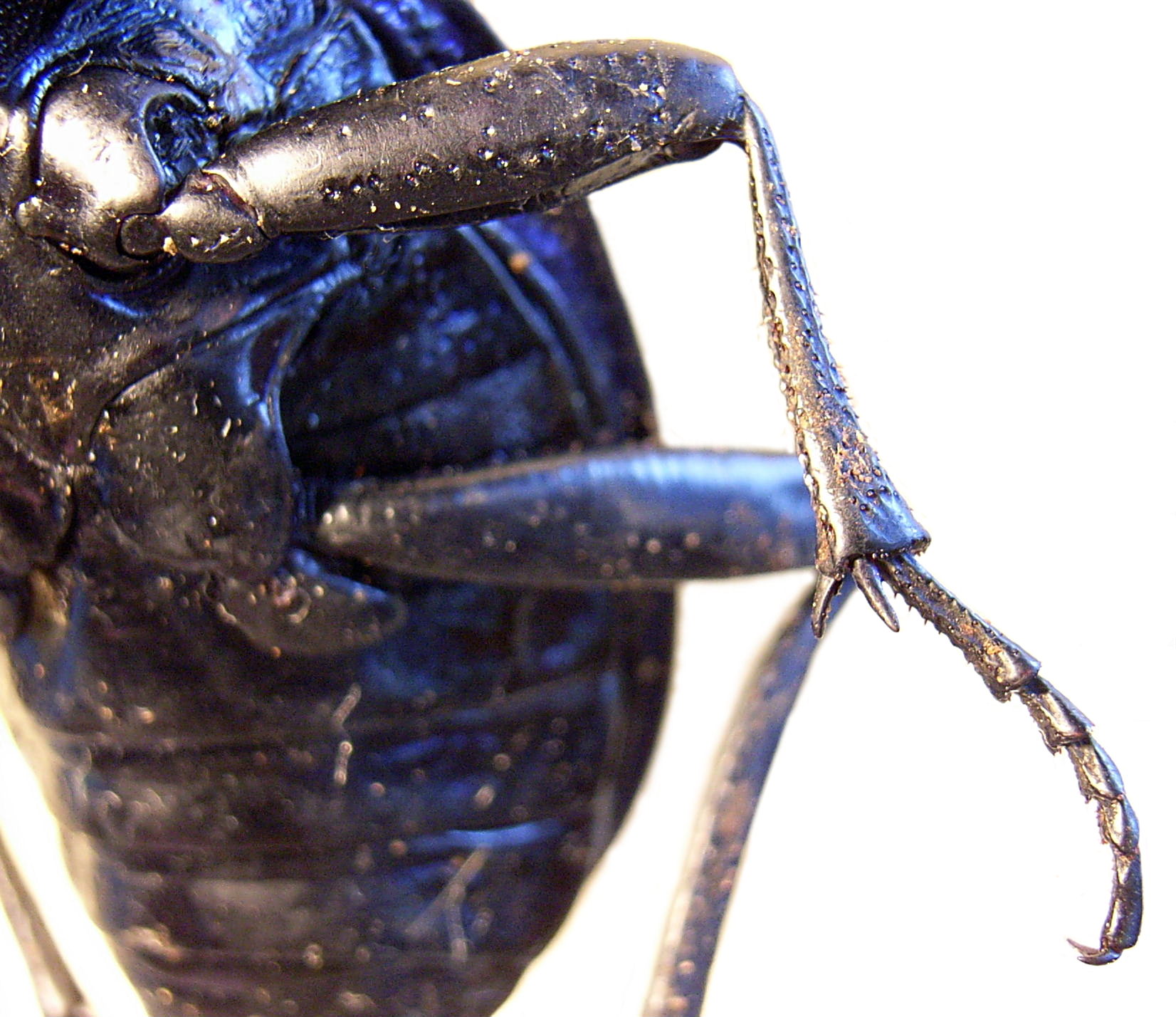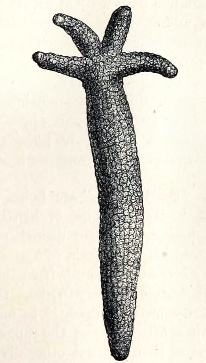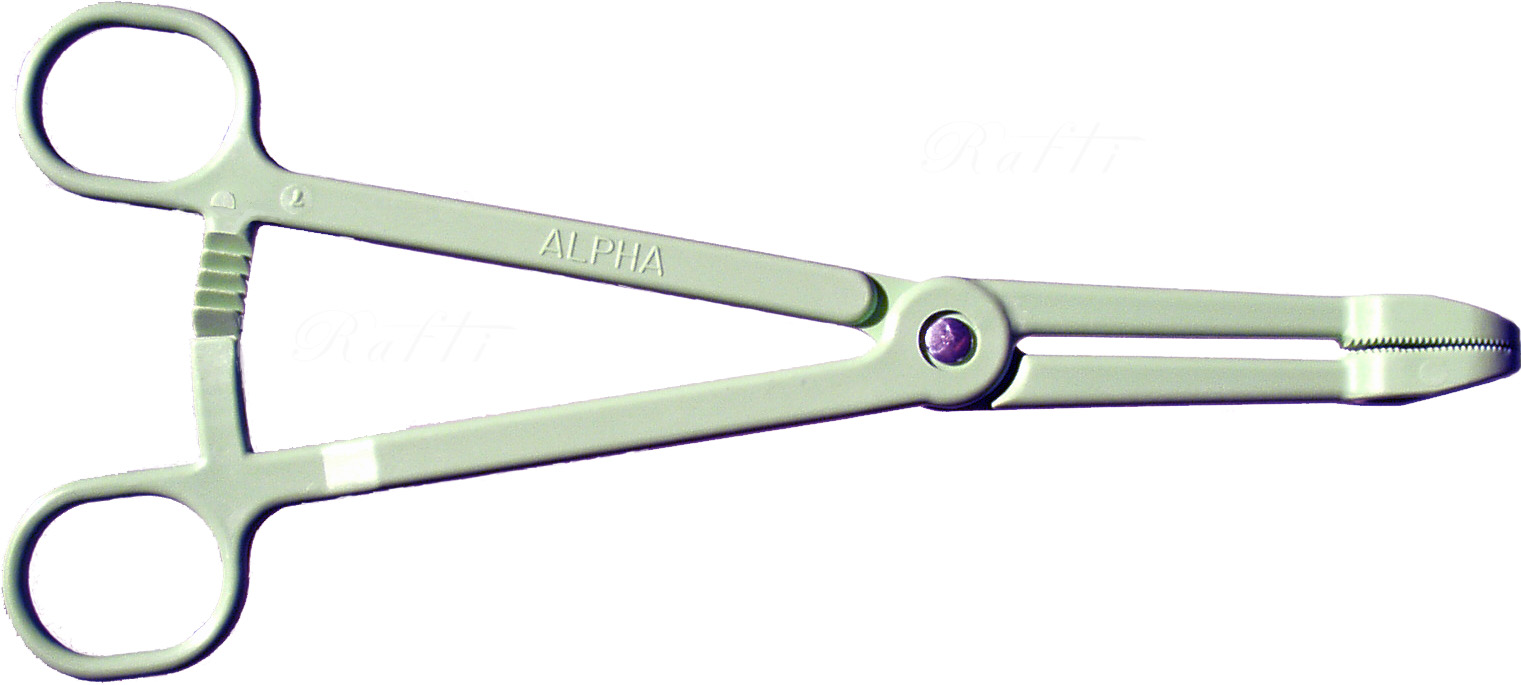|
Pedicellaria
A pedicellaria (: pedicellariae) is a small wrench- or claw-shaped appendage with movable jaws, called valves, commonly found on echinoderms (phylum Echinodermata), particularly in sea stars (class Asteroidea) and sea urchins (class Echinoidea). Each pedicellaria is an effector organ with its own set of muscles, neuropils, and sensory receptors and is therefore capable of reflex responses to the environment. Pedicellariae are poorly understood but in some taxa, they are thought to keep the body surface clear of algae, encrusting organisms, and other debris in conjunction with the ciliated epidermis present in all echinoderms. These structures are derived from the mesodermal skeleton. In sea stars Types There are two major types of pedicellaria in sea stars: straight and crossed. Straight pedicellaria are typically larger and located on the body surface, whereas crossed pedicellaria are smaller and found more commonly on stalks, raised above the body surface or in clum ... [...More Info...] [...Related Items...] OR: [Wikipedia] [Google] [Baidu] |
Toxopneustes Pileolus
''Toxopneustes pileolus'', commonly known as the flower urchin, is a widespread and commonly encountered species of sea urchin from the Indo-West Pacific. It is considered highly dangerous, as it is capable of delivering extremely painful and medically significant stings when touched. It inhabits coral reefs, seagrass beds, and rocky or sandy environments at depths of up to . It feeds on algae, bryozoans, and organic detritus. Its common name is derived from its numerous and distinctively flower-like pedicellariae, which are usually pinkish-white to yellowish-white in color with a central purple dot. It possesses short and blunt spines, though these are commonly hidden beneath the pedicellariae. The rigid "shell" (Sea urchin#Organs and test, test) is a variegated deep red and gray in color, though in rare cases it may be greenish to light purple. Taxonomy ''Toxopneustes pileolus'' is one of four species belonging to the genus ''Toxopneustes''. It belongs to the family (biology), ... [...More Info...] [...Related Items...] OR: [Wikipedia] [Google] [Baidu] |
Pedicellaria Asteroid-and-Echinoid
A pedicellaria (: pedicellariae) is a small wrench- or claw-shaped appendage with movable jaws, called valves, commonly found on echinoderms (phylum Echinodermata), particularly in sea stars (class Asteroidea) and sea urchins (class Echinoidea). Each pedicellaria is an wikt:effector, effector organ (anatomy), organ with its own set of muscles, neuropils, and sensory receptors and is therefore capable of reflex responses to the environment. Pedicellariae are poorly understood but in some taxa, they are thought to keep the body surface clear of algae, encrusting organisms, and other debris in conjunction with the ciliated epidermis present in all echinoderms. These structures are derived from the mesodermal skeleton. In sea stars Types There are two major types of pedicellaria in sea stars: straight and crossed. Straight pedicellaria are typically larger and located on the body surface, whereas crossed pedicellaria are smaller and found more commonly on stalks, raised above ... [...More Info...] [...Related Items...] OR: [Wikipedia] [Google] [Baidu] |
Asteroidea
Starfish or sea stars are star-shaped echinoderms belonging to the class Asteroidea (). Common usage frequently finds these names being also applied to ophiuroids, which are correctly referred to as brittle stars or basket stars. Starfish are also known as asteroids due to being in the class Asteroidea. About 1,900 species of starfish live on the seabed in all the world's oceans, from warm, tropical zones to frigid, polar regions. They are found from the intertidal zone down to abyssal depths, at below the surface. Starfish are marine invertebrates. They typically have a central disc and usually five arms, though some species have a larger number of arms. The aboral or upper surface may be smooth, granular or spiny, and is covered with overlapping plates. Many species are brightly coloured in various shades of red or orange, while others are blue, grey or brown. Starfish have tube feet operated by a hydraulic system and a mouth at the centre of the oral or lower surfa ... [...More Info...] [...Related Items...] OR: [Wikipedia] [Google] [Baidu] |
Asterias Forbesi Ring Of Pedicellaria Around Spine
''Asterias'' is a genus of the Asteriidae family of sea stars. It includes several of the best-known species of sea stars, including the (Atlantic) common starfish, ''Asterias rubens'', and the northern Pacific seastar, '' Asterias amurensis''. The genus contains a total of eight species in all. All species have five arms and are native to shallow oceanic areas (the littoral zone) of cold to temperate parts of the Holarctic. These starfish have planktonic larvae. ''Asterias amurensis'' is an invasive species in Australia and can in some years become a pest in the Japanese mariculture industry. History The genus ''Asterias'' was first described by Carl Linnaeus in the 10th edition of Systema Naturae in 1758 when he published ''A. rubens''. It was for a time the only species, but by the early 1800s a few dozen taxa had been described in this genus. In 1825 Thomas Say listed six species native to the coasts of the United States (which at the time consisted of the east coast from ... [...More Info...] [...Related Items...] OR: [Wikipedia] [Google] [Baidu] |
Echinoidea
Sea urchins or urchins () are echinoderms in the class Echinoidea. About 950 species live on the seabed, inhabiting all oceans and depth zones from the intertidal zone to deep seas of . They typically have a globular body covered by a spiny protective tests (hard shells), typically from across. Sea urchins move slowly, crawling with their tube feet, and sometimes pushing themselves with their spines. They feed primarily on algae but also eat slow-moving or sessile animals such as crinoids and sponges. Their predators include sharks, sea otters, starfish, wolf eels, and triggerfish. Like all echinoderms, adult sea urchins have pentagonal symmetry with their pluteus larvae featuring bilateral (mirror) symmetry; The latter indicates that they belong to the Bilateria, along with chordates, arthropods, annelids and molluscs. Sea urchins are found in every ocean and in every climate, from the tropics to the polar regions, and inhabit marine benthic (sea bed) habitats, from ... [...More Info...] [...Related Items...] OR: [Wikipedia] [Google] [Baidu] |
Appendage
An appendage (or outgrowth) is an external body part or natural prolongation that protrudes from an organism's body such as an arm or a leg. Protrusions from single-celled bacteria and archaea are known as cell-surface appendages or surface appendages. In many kinds of eukaryotic cells, the protrusions are known as membrane protrusions or cell appendages (examples include microvilli and cilia). Types in animals In arthropods, an appendage refers to any of the homologous body parts that may extend from a body segment, including antennae, mouthparts (including mandibles, maxillae and maxillipeds), gills, locomotor legs ( pereiopods for walking, and pleopods for swimming), sexual organs ( gonopods), and parts of the tail (uropods). Typically, each body segment carries one pair of appendages. An appendage which is modified to assist in feeding is known as a maxilliped or gnathopod. In annelids lateral protrusions from the body are called parapodia. In echinoderms ... [...More Info...] [...Related Items...] OR: [Wikipedia] [Google] [Baidu] |
Brisingida
The Brisingids are deep-sea-dwelling starfish in the order Brisingida. Description These starfish have between 6 and 16 long, attenuated arms which they use for suspension feeding. Other characteristics include a single series of marginals, a fused ring of disc plates, the lack of actinal plates, a spool-like ambulacral column, reduced abactinal plates, and crossed pedicellariae. They are 40 times the size of disk radius and have 7–20 flexible spiny arms. Distribution Brisingida occur in a number of deep-sea locations, particularly in the Caribbean and New Zealand New Zealand () is an island country in the southwestern Pacific Ocean. It consists of two main landmasses—the North Island () and the South Island ()—and List of islands of New Zealand, over 600 smaller islands. It is the List of isla .... This type of species are found of varying size especially in the eastern Pacific Ocean at a depth of 1,820–2,418 m. Taxonomy The Brisingida contain two fam ... [...More Info...] [...Related Items...] OR: [Wikipedia] [Google] [Baidu] |
Echinoderm
An echinoderm () is any animal of the phylum Echinodermata (), which includes starfish, brittle stars, sea urchins, sand dollars and sea cucumbers, as well as the sessile sea lilies or "stone lilies". While bilaterally symmetrical as larvae, as adults echinoderms are recognisable by their usually five-pointed radial symmetry (pentamerous symmetry), and are found on the sea bed at every ocean depth from the intertidal zone to the abyssal zone. The phylum contains about 7,600 living species, making it the second-largest group of deuterostomes after the chordates, as well as the largest marine-only phylum. The first definitive echinoderms appeared near the start of the Cambrian. Echinoderms are important both ecologically and geologically. Ecologically, there are few other groupings so abundant in the deep sea, as well as shallower oceans. Most echinoderms are able to reproduce asexually and regenerate tissue, organs and limbs; in some cases, they can undergo ... [...More Info...] [...Related Items...] OR: [Wikipedia] [Google] [Baidu] |
Echinodermata
An echinoderm () is any animal of the phylum Echinodermata (), which includes starfish, brittle stars, sea urchins, sand dollars and sea cucumbers, as well as the sessile sea lilies or "stone lilies". While bilaterally symmetrical as larvae, as adults echinoderms are recognisable by their usually five-pointed radial symmetry (pentamerous symmetry), and are found on the sea bed at every ocean depth from the intertidal zone to the abyssal zone. The phylum contains about 7,600 living species, making it the second-largest group of deuterostomes after the chordates, as well as the largest marine animal, marine-only phylum. The first definitive echinoderms appeared near the start of the Cambrian. Echinoderms are important both ecologically and geologically. Ecologically, there are few other groupings so abundant in the deep sea, as well as continental shelf, shallower oceans. Most echinoderms are able to asexual reproduction, reproduce asexually and regeneration (biology), regenerat ... [...More Info...] [...Related Items...] OR: [Wikipedia] [Google] [Baidu] |
Ambulacral
Ambulacral is a term typically used in the context of anatomical parts of the phylum Echinodermata or class Asteroidea and Edrioasteroidea. Echinoderms can have ambulacral parts that include ossicles, plates, spines, and suckers. For example, sea stars or "star fish" have an ambulacral groove on their oral side (underside). This ambulacral groove extends from the mouth to the end of each ray or arm. Each groove of each arm in turn has four rows of hollow tube feet that can be extended or withdrawn. Opposite the ambulacral groove is an ambulacral ridge on the aboral side of each ray, known as an ambulacrum. These have interambulacra between them. Etymology From the Latin 'ambulācrum', meaning 'walk planted with trees', 'avenue', 'alley' and 'walking Walking (also known as ambulation) is one of the main gaits of terrestrial locomotion among legged animals. Walking is typically slower than running and other gaits. Walking is defined as an " inverted pendulum" gait in which th ... [...More Info...] [...Related Items...] OR: [Wikipedia] [Google] [Baidu] |
Forceps
Forceps (: forceps or considered a plural noun without a singular, often a pair of forceps; the Latin plural ''forcipes'' is no longer recorded in most dictionaries) are a handheld, hinged instrument used for grasping and holding objects. Forceps are used when fingers are too large to grasp small objects or when many objects need to be held at one time while the hands are used to perform a task. The term "forceps" is used almost exclusively in the fields of biology and medicine. Outside biology and medicine, people usually refer to forceps as tweezers, tongs, pliers, clips or clamps. Mechanically, forceps employ the principle of the lever to grasp and apply pressure. Depending on their function, basic surgical forceps can be categorized into the following groups: # Non-disposable forceps. They should withstand various kinds of physical and chemical effects of body fluids, secretions, cleaning agents, and sterilization methods. # Disposable forceps. They are usually made of lo ... [...More Info...] [...Related Items...] OR: [Wikipedia] [Google] [Baidu] |








